Türkei |
|
|
|
| Übersicht – Contents: | |
Türkei |
|
|
|
| Übersicht – Contents: | |
Flaggen – Flags: |
|
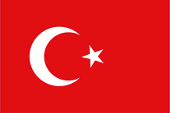 |
National-, Staats, Handels- und Marineflagge – national, state, merchant and naval flag, Seitenverhältnis – ratio = 2:3, Quelle/Source, nach/by: Flags of the World |
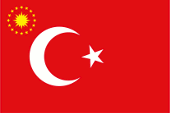 |
Flagge des Präsidenten – flag ot the President, Seitenverhältnis – ratio = 2:3, Quelle/Source, nach/by: Flags of the World |
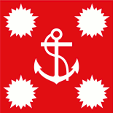 |
Flagge des Oberbefehlshabers der Marine – flag of the Supreme Sommander of the Navy, Seitenverhältnis – ratio = 1:1, Quelle/Source, nach/by: Flags of the World |
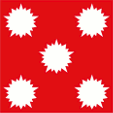 |
Flagge des Großadmirals – flag of the High Admiral, Seitenverhältnis – ratio = 1:1, Quelle/Source, nach/by: Flags of the World |
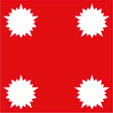 |
Flagge eines Admirals – flag of an Admiral, Seitenverhältnis – ratio = 1:1, Quelle/Source, nach/by: Flags of the World |
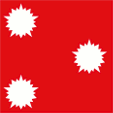 |
Flagge eines Vizeadmirals – flag of a Vice-Admiral, Seitenverhältnis – ratio = 1:1, Quelle/Source, nach/by: Flags of the World |
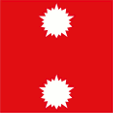 |
Flagge eines Konteradmirals – flag of a Rear-Admiral, Seitenverhältnis – ratio = 1:1, Quelle/Source, nach/by: Flags of the World |
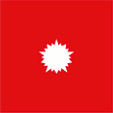 |
Flagge eines Flottillenadmirals – flag of a Commodore, Seitenverhältnis – ratio = 1:1, Quelle/Source, nach/by: Flags of the World |
historische Flaggen – historical Flags: |
|
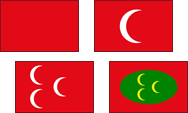 |
15.–18. – Jahrhundert/century, |
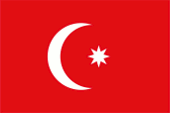 |
1793–1844, |
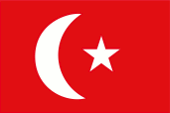 |
1844–1923, |
 |
ca. 1844–1919, |
 |
ca. 1844–1912, |
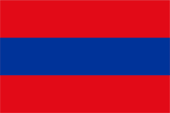 |
ca. 1844–1919, |
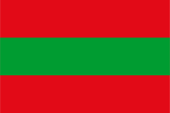 |
ca. 1844–1919, |
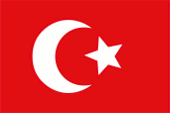 |
1890–1923, |
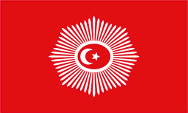 |
bis/to 1922, Flagge des Sultans – flag of the Sultan, Quelle/Source, nach/by: histor. Abb./Pic. |
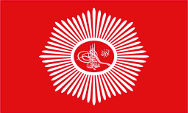 |
bis/to 1922, Flagge des Sultans zur See – flag of the Sultan at sea, Quelle/Source, nach/by: histor. Abb./Pic. |
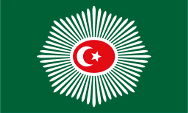 |
bis/to 1924, Flagge des Kalifen – flag of the Caliph, Quelle/Source, nach/by: Wikipedia (EN) |
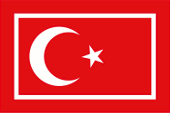 |
1919–1937, |
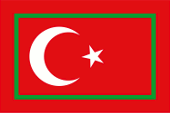 |
ab/from 1937, |
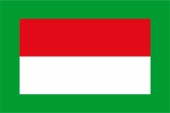 |
ab/from 1936, |
 |
Lotsen(ruf)flagge – pilot jack, |
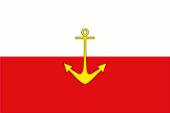 |
Unterscheidungsflagge für Lotsenfahrzeuge |
 |
ab/from ca. 1937 (?), |
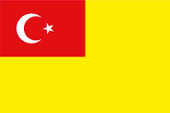 |
ab/from ca. 1937 (?), |
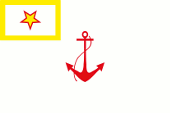 |
ab/from ca. 1937 (?), |
|
Die Flagge der Türkei zeigt auf einem einfarbig roten Tuch einen weißen
Halbmond und einen fünfstrahligen weißen Stern. In ihrer heutigen Form wurde
die Flagge um 1844 eingeführt, und am 05.06.1936 – nach anderen Quellen am
29.05.1936 – offiziell und per Gesetz bestätigt. Rot und Weiß gelten heute
als die Nationalfarben. Die Türkei ist der Erbe des Osmanischen Reiches.
Dessen Flaggengeschichte beginnt am Anfang des 14. Jahrhunderts mit einem
weißen Banner, das Osman Bey durch den anatolischen Seldschukenherrscher
Mesud II. überreicht wurde. Ab dem 15. Jahrhundert kommt die Farbe Rot in
Gebrauch, die Farbe des Kalifen Omar I., die auf den Flaggen und Bannern
erschien. Diese konnten einfarbig rot sein, oder auch einen oder mehrere
weiße Halbmonde zeigen. Eine Standardisierung gab es noch nicht. Um 1793 –
unter der Herrschaft von Sultan Selim III. – wurde erstmals ein neben dem
Halbmond platzierter weißer Stern auf der Flagge erwähnt. Er soll mit dem
1801 gestifteten Halbmondorden im Zusammenhang stehen und demzufolge – wie
auf dem Orden – acht Strahlen haben. Er gilt als Siegeszeichen. In Jahre
1844, in der Zeit der Tanzimat-Reformen, soll dann vom achtstrahligen zum
fünfstrahligen Stern gewechselt worden sein, der den Menschen symbolisiert.
Damit wäre im Prinzip in jenem Jahr das heutige Design der Flagge eingeführt
worden. Standardisierungen gab es aber immer noch nicht, so dass das
Erscheinungsbild von Halbmond und Stern immer wieder variierte und
keineswegs einheitlich war. Das führte, gerade im Bereich der privaten
Beflaggung, z.B. Handelsflagge, zu zahlreichen Varianten, die als
Handelsflagge in Flaggenkataloge aufgenommen worden sind. So gibt es z.B.
auch Abbildungen von roten Flaggen mit einem Stern in der Oberecke, die die
Handelsflagge darstellen sollen. Generell war die Handelsflagge eigentlich
einfarbig rot, jedoch gab es Varianten für bestimmte Nationalitäten oder
Bevölkerungsgruppen, die innerhalb des Osmanischen Reiches eine
privilegierte Stellung einnahmen. Erst 1936 und 1937, unter der Herrschaft von Mustafa Kemal Atatürk, hat man Regularien geschaffen, die das Erscheinungsbild der Flagge definierten. Am 25.01.1985 wurden per Beschluss Nummer 85/9034 Artikel 4 des Ministerrats die Abmessungen der Flagge festgelegt. Der Farbton des Rot scheint definiert, es lässt sich eine Angabe finden: Hexadezimal #E30A17. Daraus lässt sich ein Pantone-Farbton ableiten: Pantone 1788 c. Der Stern ist eigentlich das Symbol der Stadt Konstantinopel und er steht für die Jungfrau Maria. Als die Türken diese Stadt im Jahre 1453 nach ihren jahrelangen Wanderungen und über 100 Jahren Krieg gegen das Oströmische Reich eroberten, übernahmen sie den Stern in ihre Symbolik, so wurde er zum Siegeszeichen. Auf den roten Halbmond-Flaggen des Osmanischen Reiches tauchte der Stern erst recht spät am Beginn des 18. Jahrhunderts als Ergänzung auf. Der Halbmond ist ein uraltes und weit verbreitetes heidnisches Symbol der Menschheit. Er steht für Fruchtbarkeit und Gesundheit. Er wurde von den Türken wahrscheinlich schon aus den Steppen Mittelasiens mitgebracht. Natürlich gibt es auch eine Legende. Sie lässt den Halbmond dem Herrscher Osman I. (1259–1326), dem Gründer der osmanischen Dynastie und des Osmanischen Reiches in einem Traum von fruchtbaren und durch den Islam zu unterwerfenden Ländern erscheinen. Ein weitere Legende geaht auf Sultan Murad II. (1404–1451) zurück, der nach der Schlacht auf dem Amselfeld (Kosovo) im Jahre 1448 das Spiegelbild des Mondes in einem See aus dem Blut der getöteten Christen gesehen hat. Letztlich geht der gesamte islamische Symbolismus, in Form von Halbmond und Stern, auf das Osmanische Reich zurück. Der letzte Kalif (aus dem Haus der Abbasiden) war 1258 hingerichtet worden. Der Kalif, Nachfolger Mohammeds, war religiöses und weltliches Oberhaupt des "Islamischen Reichs". Um 1460 wurde das Kalifat vom Herrscher des Osmanischen Reichs wiederbelebt. Diese Funktion wurde besonders wichtig als die Türken im Jahre 1517 die Stadt Mekka eroberten, und die Funktion der obersten Hüter und Bewahrer der heiligen Stätten übernahmen. Die Kontrolle über die heiligen Stätten ging während des Ersten Weltkriegs verloren (Mekka 1916, Medina 1918). Das Kalifat wurde 1924 von der türkischen Nationalversammlung abgeschafft. Als es in Teilen des Osmanischen Reiches im 19. Jahrhundert zu Unabhängigkeitsbewegungen kam, setzte Abdul Hamid II. diesen Bewegungen erfolgreich das einigende Band des Panislamismus entgegen. Zum Symbol des Panislamismus machte er eine grüne Flagge (Farbe des Mantels des Propheten Mohammed), und setzte die türkischen Symbole darauf. Die Flagge des Islam war erschaffen. Das türkische Kalifat und das Osmanische Reich haben so über die Jahrhunderte die Symbolik von Halbmond und Stern in Welt des Islam eingebracht. Aus historischen Flaggenkatalogen sind viele Abbildungen von Sonderflaggen bekannt, z.B. aus dem Bereich Schifffahrtsbehörden, Lotsenwesen oder Zoll, die meist 1937 eingeführt worden waren. Diese sind heute abgeschafft, einerseits durch die internationalen Standardisierungen im Lotsenwesen, andererseits wurden sie durch die allgemeine Flagge ersetzt und auch der Zoll verlor seine Sonderstellung. Er ist mittlerweile dem Handelsministerium unterstellt, dass kein eigenes Hoheitszeichen verwendet. Alle Ministerien haben eigene Flaggen, meist weiß mit einem runden Logo und Inschrift in Rot in der Mitte, die jedoch keine Hoheitszeichen sind. Ebenso gibt es eigene Flaggen für die Truppenteile der türkischen Armee (Heer, Marine, Luftwaffe) die ebenfalls keine Hoheitszeichen sind und nicht auf Fahrzeugen oder Schiffen verwendet werden. |
The flag of Turkey shows a white crescent and a five-pointed white star on a
plain red bunting. In its current form, the flag was introduced around 1844
and officially and legally confirmed on 5th of June in 1936, according to
other sources on 29th of May in 1936. Red and white are now considered the
national colours. Turkey is the heir to the Ottoman Empire. Its flag history begins at the beginning of the 14th century with a white banner that was presented to Osman Bey by the Anatolian Seljuk ruler Mesud II. From the 15th century onwards, the colour red came into use, the colour of Caliph Omar I., which now appeared on flags and banners. These could be solid red or show one or more white crescents. There was no standardization yet. Around 1793 – under the rule of Sultan Selim III. – was mentioned for the first time that a white star was placed next to the crescent moon on the flag. It is said to be related to the Crescent Order founded in 1801 and therefore – like on the order – the star had eight rays. It is considered a sign of victory. In 1844, during the time of the Tanzimat reforms, the eight-pointed star is said to have changed to the five-pointed star, which symbolizes the human being. In principle, the current design of the flag would have been introduced that year. However, there was still no standardization, so the appearance of the crescent and star varied again and again and was by no means uniform. This caused, especially in the area of private flagging, e.g. merchant flags, to numerous variants that have been included in flag catalogs as a merchant flag. For example, there are also images of red flags with a star in the top corner, which are supposed to represent the merchant flag. In general, the merchant flag was actually a solid red bunting, but there were variants for certain nationalities or population groups that held a privileged position within the Ottoman Empire. It was not until 1936 and 1937, under the rule of Mustafa Kemal Atatürk, that regulations were created that defined the appearance of the flag. On 25th of January in 1985, the dimensions of the flag were determined by Decision Number 85/9034 Article 4 of the Council of Ministers. The colour-shade of the red seems to be defined; an indication can be found: Hexadecimal #E30A17. A Pantone colour can be derived from this: Pantone 1788 c. The star is actually the symbol of the city of Constantinople and it represents the Virgin Mary. When the Turks conquered this city in 1453 after years of migration and over 100 years of war against the Eastern Roman Empire, they adopted the star into their symbolism and it became a symbol of victory. The star as an addition to the red crescent flags of the Ottoman Empire appeared quite lately at the beginning of the 18th century. The crescent moon is an ancient and widespread pagan symbol of humanity. It represents fertility and health. The Turks probably brought it with them from the steppes of Central Asia. Of course there is also a legend. It makes the crescent moon appear to the ruler Osman I. (1259–1326), the founder of the Ottoman dynasty and the Ottoman Empire, in a dream of fertile lands to be subjugated by Islam. Another legend goes back to Sultan Murad II. (1404–1451), who, after the Battle of Amselfeld (Kosovo) in 1448, saw the reflection of the moon in a lake made of the blood of the killed Christians. Ultimately, all Islamic symbolism, in the form of the crescent and star, goes back to the Ottoman Empire. The last caliph (from the Abbasid house) was executed in 1258. The caliph, successor to Muhammad, was the religious and secular head of the "Islamic Empire". Around 1460, the Caliphate was revived by the ruler of the Ottoman Empire. This role became particularly important when the Turks conquered the city of Mecca in 1517 and took over the role of supreme guardians and preservers of the holy places. The control over the holy sites was lost during the First World War (Mecca 1916, Medina 1918). The Caliphate was abolished by the Turkish National Assembly in 1924. When independence movements arose in parts of the Ottoman Empire in the 19th century, Abdul Hamid II. successfully countered these movements with the unifying bond of pan-Islamism. He made a green flag (colour of the Prophet Mohammed's coat) a symbol of pan-Islamism and placed the Turkish symbols on it. The flag of Islam was created. The Turkish Caliphate and the Ottoman Empire have introduced the symbolism of the crescent and star into the world of Islam over the centuries. Many images of special flags are known from historical flag catalogs, e.g. from the areas of shipping authorities, pilotage or customs, most of which were introduced in 1937. These have been abolished today, on the one hand due to international standardization in pilotage, on the other hand they have been replaced by the general flag and customs have also lost their special status. Customs is now subordinate to the Ministry of Commerce, which does not use its own national emblem. All ministries have their own flags, mostly white with a round logo and inscription in red in the middle, but these are not national emblems. There are also separate flags for the units of the Turkish army (army, navy, air force), which are also not national emblems and are not used on vehicles or ships. |
| Quelle/Source: Flags of the World, Wikipedia (TR), World Statesmen, Die Welt der Flaggen, Flaggen und Wappen, Flaggen Wappen Hymnen, Flaggen und Wappen der Welt, Flaggen Enzyklopädie, Flaggen-Atlas Erde, Die Welt im bunten Flaggenbild, Volker Preuß | |
Wappen – Coat of Arms: |
|
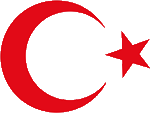 |
Hoheitszeichen der Türkei – National emblem of Turkey, Quelle/Source, nach/by: Wikipedia (DE) |
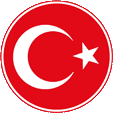 |
Emblem der Türkei für den nichtstaatlichen Gebrauch – Emblem of Turkey for non-governmental use, Quelle/Source, nach/by: Wikipedia (DE) |
 |
Emblem der Türkei im Diplomatischen Dienst – Emblem of Turkey in the diplomatic service, Quelle/Source, nach/by: Wikipedia (DE) |
 |
Emblem der Türkei mit Inschrift – Emblem of Turkey with inscription, Quelle/Source: Corel Draw 4 |
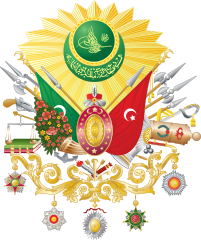 |
1882–1922, Wappen des Osmanischen Reiches – Coat of arms of the Ottoman Empire, Quelle/Source: Juristiltins, Public domain, via Wikimedia Commons |
| Die Türkei hat seit Gründung der Republik (1923) kein Wappen im herkömmlichen Sinne mehr. Stattdessen wird ein Emblem in verschiedenen Ausführungen genutzt, das Halbmond und Stern zeigt, meist in einem roten Oval, so wie es auch schon im Osmanischen Reich seit 1876 verwendet wurde. Nach Einführung der republikanischen Verfassung wurde dieses Hochoval beibehalten und wird gelegentlich durch den Namen des Landes am oberen Rand ergänzt: "Türkiye Cumhuriyeti" → "Republik Türkei". Manchmal erscheint der Name des Landes auch in Gold. Das Wappen des Osmanischen Reiches zeigte im Wesentlichen zentral einen ovalen Schild und links und rechts je eine Fahne, die grüne Fahne stand für Rumelien, den europäischen Landesteil, die rote Fahnen für den asiatischen Landesteil. |
Since the founding of the
republic (1923), Turkey has no longer had a coat of arms in the traditional
sense. Instead, an emblem is used in various designs that shows a crescent
moon and star, usually in a red oval, as was used in the Ottoman Empire
since 1876. After the introduction of the republican constitution, this high oval was retained and is occasionally supplemented by the name of the country at the top: "Türkiye Cumhuriyeti" → "Republic of Turkey". Sometimes the name of the country also appears in gold. The coat of arms of the Ottoman Empire essentially showed an oval shield in the center and a flag on the left and right; the green flag stood for Rumelia, the European part of the country, and the red flag for the Asian part of the country. |
| Quelle/Source: 1.) Wikipedia (DE), 2.) Wikipedia (DE) | |
Flugzeugkokarde – aircraft roundel: |
|
 |
seit/since 1972, Flugzeugkokarde – aircraft roundel Quelle/Source, nach/by: Wikipedia (EN) |
 |
1918–1972, Flugzeugkokarde – aircraft roundel Quelle/Source, nach/by: Wikipedia (EN) |
| Landkarte – Map: |
Lage
– Position: |
Landkarte
des Landes – Map of the Country: |
Osmanisches Reich – Ottoman Empire: |
| Zahlen und Fakten – Numbers and Facts: | |
|
|
|
|
|
|
|
|
|
|
|
|
|
|
|
|
|
|
|
11. Jahrhundert
· türkische Stämme (unter ihnen die Seldschuken) dringen aus Zentralasien
über Buchara in verschiedene historische islamische Reiche ein
(Karachaniden-Reich, Ghasnawiden-Reich und Bujiden-Reich), nehmen den Islam
als Glauben an und dringen bis nach Kleinasien in das Herz des Oströmischen
Reiches (Byzantinisches Reich) ein 1097 · Kylydsch-Arslan gründet in Ostanatolien das bis 1307 bestehende Seldschukenreich 1300 · der Türke Osman I. führt die türkischen Stämme im Glaubenskrieg gegen Byzanz und erobert Westanatolien 1326–1375 · Eroberungen der Osmanen (die Nachkommen Osmans) in Westanatolien, Rumelien und Thrakien 1375–1461 · Eroberungen der Osmanen in Ostanatolien, Nordanatolien, Griechenland, Bulgarien, Makedonien und Serbien 1451 · der Osmane Mehmed nimmt den Titel Sultan an, und erneuert wenig später das Kalifat 1453 · Eroberung von Konstantinopel 1461–1517 · Eroberungen der Osmanen in Albanien, Bosnien, Ostanatolien, Krim, Syrien, Palästina, Ägypten und Hedschas 1517–1566 · Eroberungen der Osmanen in Georgien, Cyrenaica, Tripolitanien, Irak, Asir, Jemen, Ungarn, Siebenbürgen, Walachei, Moldau und Transnistrien 1571 · Seeschlacht von Lepanto, Verlust der Vorherrschaft im Mittelmeer, jedoch Eroberung von Zypern 1683 · erfolglose Belagerung von Wien 1699 · Verlust Ungarns, Siebenbürgens und Podoliens 1739–1783 · Verlust der Bukowina, Transnistriens und der Krim 1812 · Verlust von Bessarabien 1829 · Griechenland wird unabhängig 1830 · Serbien wird unabhängig, Algerien geht an Frankreich verloren 1875 · Staatsbankrott 1876 · Verfassung 1878 · Verfassung aufgehoben 1877–1878 · russisch-türkischer Krieg, Niederlage der Türkei 1878 · Berliner Kongress, Unabhängigkeit für Rumänien, Serbien und Montenegro, Autonomie für Bulgarien, Zypern wird an Großbritannien abgetreten 1881 · Frankreich besetzt Tunesien 1882 · Großbritannien besetzt Ägypten 1908 · Österreich-Ungarn besetzt Bosnien-Herzegowina 1909 · Verfassung 1911–1912 · Italienisch-Türkischer Krieg, Italien erobert Tripolitanien und die Cyrenaica 1912-1913 · Balkankriege, das Osmanische Reich verliert alle europäischen Besitzungen außer Istanbul und Adrianopel 1914–1918 · Erster Weltkrieg, Osmanische Reich gehört zu den Mittelmächten und kämpft gegen die Entente, 1915-1916 Völkermord an den Armeniern, ab 1917 Rückzug an allen Fronten, außer im Kaukasus, 1918 nur noch Anatolien und der Kaukasus werden gehalten, Griechische Truppen besetzen Smyrma (Izmir) 1920 · Frieden von Sèvres, Verlust aller Besitzungen außer Anatolien, Abtretung von Smyrna an Griechenland, Unabhängigkeit für Kurdistan 1921–1922 · Rückeroberung von Smyrna und Vertreibung aller Griechen unter Mustafa Kemal 1922 · der Osmane Mehmed VI. wird abgesetzt, Ende des Osmanischen Reiches 1923 · Proklamation der Republik Türkei, Frieden von Lausanne, die Türkei erhält ihr heutiges Staatsgebiet 1924 · Abschaffung des Kalifats 1923–1945 · Modernisierung des Landes, Neutralität 23.02.1945 · Kriegserklärung an das Deutsche Reich im Zweiten Weltkrieg (1939-1945) 1952 · Beitritt zur NATO 1955 · Beitritt zum Bagdad-Pakt (CENTO) 1960 · Militärputsch 1963 · Assoziierungsabkommen mit der EWG (heute EU) 1974 · Besetzung von Nordzypern 1980 · Militärputsch 1982 · neue Verfassung ab 1991 · militärische Auseinandersetzungen mit den Kurden ab 1995 · Erstarken islamistischer Kräfte 1996 · türkisch-griechische Auseinandersetzungen im Mittelmeer und auf Zypern 2003–2014 · die islamistisch-nationalistische AKP-Partei stellt den Ministerpräsidenten, das Land erreicht Stabilität, jedoch Islamisierung bei zunehmender Ignorierung der demokratisch-laizistischen Verfassung 2014 · die islamistisch-nationalistische AKP-Partei stellt den Ministerpräsidenten und den Präsidenten, weitere Islamisierung und Wandlung in eine autoritäre Diktatur unter Verletzungen der demokratisch-laizistischen Verfassung, militärische Auseinandersetzungen mit den Kurden 15.07.2016 · Putschversuch des Militärs, Beginn einer Säuberungswelle in Justiz, Militär, Verwaltung und Bildungswesen |
|
11th century
· Turkish tribes (under them the Seldshuks) invade from Central Asia over
Bukhara into several historic islamic empires (Empire of the Karakhanids,
Empire of the Ghasnawids and Empire of the Bujids), the adope the Islam and
advance to Anatolia into the heart of the East Roman Empire (Byzantium) 1097 · Kylydsch-Arslan establishes in Eastern Anatolia the until 1307 existing Seljuk Empire 1300 · the Turk Osman I. leads the Turkish tribes in an religious war against Byzantium and conquers Western Anatolia 1326–1375 · conquests of the Ottomans (the descendants of Osman) in Western Anatolia, Rumelia and Thrakia 1375–1461 · conquests of the Ottomans in Eastern Anatolia, Northern Anatolia, Greece, Bulgaria, Macedonia and Serbia 1451 · the Ottoman Mehmed adopes the title of a sultan and revives some years later the caliphate 1453 · conquest of Constantinople 1461–1517 · conquests of the Ottomans in Albania, Bosnia, Eastern Anatolia, Crimea, Syria, Palestina, Egypt and Hedjas 1517–1566 · conquests of the Ottomans in Georgia, Cyrenaica, Tripolitania, Iraq, Asir, Yemen, Hungary, Siebenburgen, Walachia, Moldavia and Transnistria 1571 · sea battle of Lepanto, loss of the predominance in the Mediterranean Sea, but conquest of Cyprus 1683 · unsuccessful siege of Vienna 1699 · loss of Hungary, Siebenburgen and Podolia 1739–1783 · loss of Bukovina, Transnistria and Crimea 1812 · loss of Bessarabia 1829 · Greece becomes independent 1830 · Serbia becomes independent, Algeria gets lost to France 1875 · state bankrupt 1876 · constitution 1878 · constitution abolished 1877–1878 · Russian-Turkish War, defeat of Turkey 1878 · Berlin Congress, independence for Romania, Serbia and Montenegro, autonomy for Bulgaria, Cyprus is to cede to United Kingdom 1881 · France occupies Tunisia 1882 · Great Britain occupies Egypt 1908 · Austria-Hungaria occupies Bosnia-Herzegovina 1909 · constitution 1911–1912 · Italian-Turkish War, Italy conquers Tripolitania and Cyrenaica 1912–1913 · Balkan Wars, the Ottoman Empire loses all european possessions besides Istanbul and Adrianople 1914–1918 · First World War, the Ottoman Empire belongs to the Middle Mights and fights against the Entente, 1915–1916 Armenian genocide, since 1917 retreat at all front lines besides in Caucasus Mountains, 1918 only Anatolia and the Caucasus Mountains are under control, Greek troops occupy Smyrma (Izmir) 1920 · peace of Sèvres, loss of all possessions besides Anatolia, Smyrna is to cede to Greece, independence for Kurdistan 1921–1922 · re-conquest of Smyrna and expulsion of all Greeks under Mustafa Kemal 1922 · the Ottoman Mehmed VI. becomes seted down, end of the Ottoman Empire 1923 · proclamation of the Republic of Turkey, peace of Lausanne, Turkey gets its today’s territories 1924 · abolition of the caliphate 1923–1945 · modernization of the country, neutrality 23rd of February 1945 · declaration of war to the German Empire in the Second World War (1939-1945) 1952 · joining to NATO 1955 · joining to Bagdad Pact (CENTO) 1960 · military coup d’état 1963 · association treaty with the EWG (today EU) 1974 · occupation of Northern Cyprus 1980 · military coup d’état 1982 · new constitution since 1991 · military quarrels with the Kurds since 1995 · grow strong of islamistic forces 1996 · Turkish-Greek quarrels in the Mediterranean Sea and on Cyprus 2003–2014 · out of the lines of the islamist-nationalist AKP-Party comes the prime minister, the country achieves stability, but also islamization by increased ignoring of the democratic-secular constitution 2014 · out of the lines of the islamist-nationalist AKP-Party come the Prime Minister and the President, further islamization and conversion into an authoritarian dictatorship, violation of the democratic-secular constitution, military quarrels with the Kurds 15th of July in 2016 · attempted coup d’état by the military, starting of a wave of purges in judiciary, military, administration and education |
| Quelle/Source: Atlas zur Geschichte, Wikipedia (D), World Statesmen, Discovery '97, Weltgeschichte, Volker Preuß |
| Der Name "Türkei" ist schon sehr alt und wurde schon immer für das Land der Türken verwendet, dass sie nach ihrer Ankunft aus Mittelasien besetzt hatten, auch unter der Herrschaft der Osmanen, der Nachfahren Osmans I., als der Begriff "Osmanisches Reich" verwendet wurde. | The name
"Turkey" is very old and was used for the land of the Turks which they
occupied after their arrival from Middle Asia, even under the rule of the
Ottomans, the descendants of Osman I., as then was in use the denomination
"Ottoman Empire". |
| Quelle/Source: Volker Preuß | |